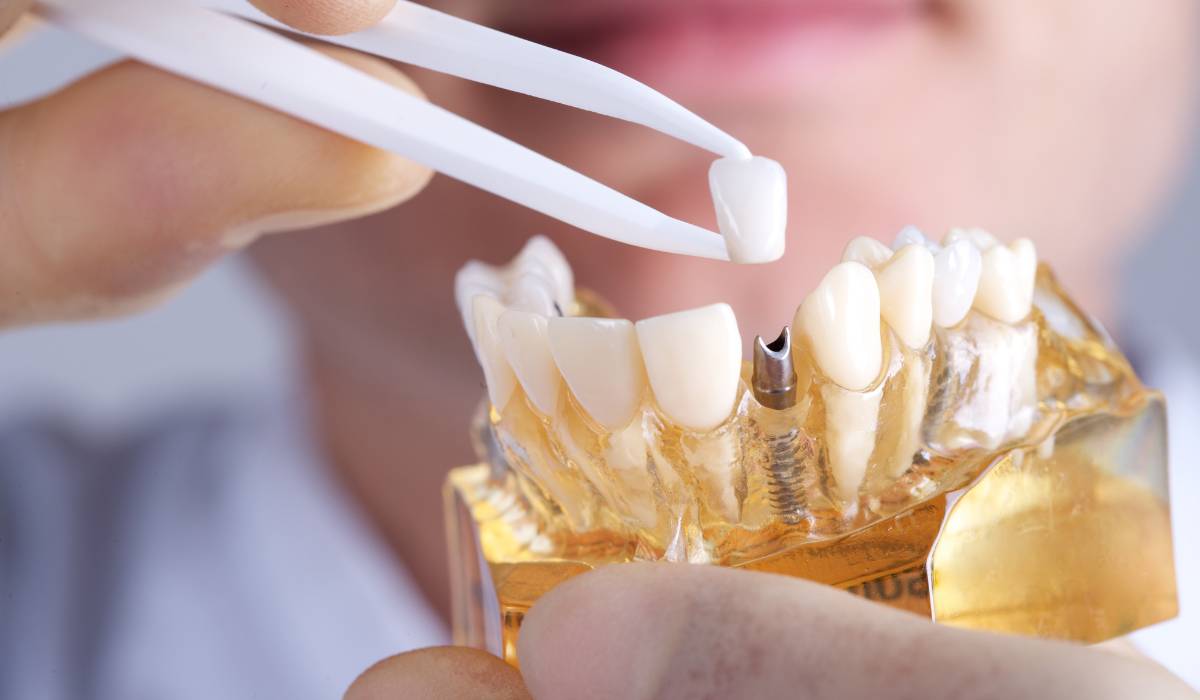TEETH - STRAIGHTENING TREATMENT
SERVICES
RESOURCES
SHOP
MEDICAL CERTIFICATIONS
Certifications ensuring safety, quality, and compliance with global standards.
Certifications ensuring safety, quality, and compliance with global standards.
What do braces have to do with dental implants? How do they work together? Can you get braces with implants? Are there any benefits to using them together?
Dental implants are permanent restorations that replace a missing tooth – they look, feel and perform like natural teeth. Meanwhile, braces are dental appliances that are designed to straighten your teeth.
Learn the following four essential details about braces with dental implants:

It is always recommended to do orthodontic treatment before getting dental implants (fake teeth). This is because braces will allow your teeth to gradually move and fix your teeth’s alignment. Once your teeth are aligned, implants can be placed without looking out of place.
You can still wear braces after you get an implant (fake teeth). However, it is more likely that your natural teeth will move but your implant will stay in the same position as it is attached and fixed to the bone. Getting braces with a dental implant will have no adverse effect on your natural teeth.
An implant (fake teeth) won’t affect your ability to receive braces treatment – only in certain cases where the teeth surrounding the implant are not designed for orthodontic treatment. If your implant is being placed at the back of your mouth, you can proceed with the implant before the braces.
As we age, our teeth tend to crowd more towards the front. This implies that the non-movable implant may begin to appear out of place over time. If an implant is positioned appropriately compared to the other teeth, braces can be used to move the teeth around it.
If your implant is not in the ideal position, it will look out of place once the rest of your teeth are aligned. In that case, you either can elect to have a slightly less than perfect smile, or to remove the implant, receive the orthodontic treatment, and replace the implant at the end of the treatment.
If you plan on using aligners instead of metal braces, the same still applies. You will be advised to go through the orthodontic treatment first, then only the dentist will apply the fitted implant in a more inner position, allowing your natural teeth to adjust to the positioning of your implant when wearing invisible braces.
It’s best to consult both your dentist and orthodontist to discuss your goals, so they can personalise a treatment plan that suits your needs. Ready to take the first step? Start with a free smile consultation today.
Get a free consultation with your orthodontist today to explore your options and take the first step towards achieving the smile of your dreams. Your journey to a confident smile starts now!
Have you noticed your smile looking a little dull lately? It’s very common for teeth to change colour over time, ...
17 November 2025
Have you ever woken up with a dry mouth or a scratchy throat? It’s uncomfortable, and sometimes even sipping water ...
13 November 2025
Flossing is a vital part of maintaining good oral hygiene, especially when you have braces or aligners. While your dentist ...
10 November 2025
Overview Cavities and tooth decay are among the most common oral health problems worldwide. They occur when the hard surface ...
3 November 2025
Get ready to smile your way to Japan! From 31 October to 27 November, Dr Clear Aligners is lighting up ...
29 October 2025

